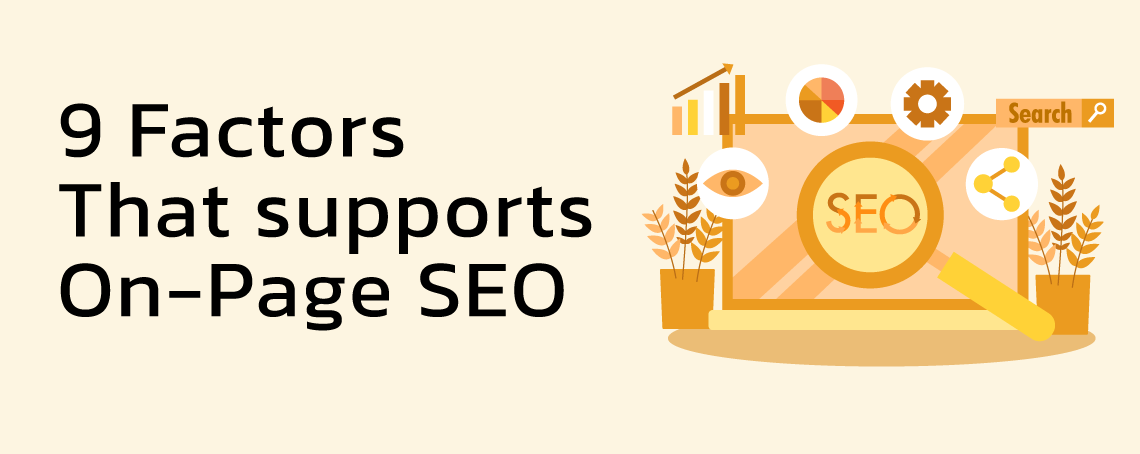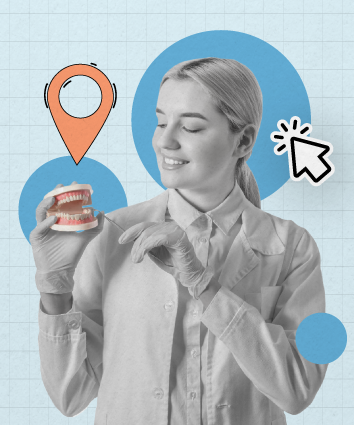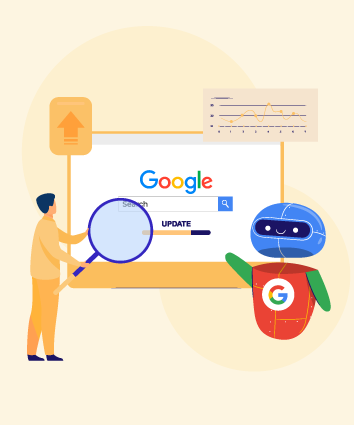9 On-Page SEO Factors You Can’t Ignore

If you have been reading about digital marketing or are familiar with the various terms of online marketing, you must be knowing the term “SEO”.
Well, if you don’t know, SEO stands for Search Engine Optimization.
As the name suggests, Search Engine Optimization is a way to optimize your website in a way that it becomes easier for search engines to understand your content and show it to relevant queries.
If we dive a little deep into SEO, there are two categories- On-page SEO and Off-page SEO.
Both of these are very important to rank on top in popular search engines like Google, Yahoo, and Binge.
But first, you need to have great on-page SEO so that you can perform Off-page SEO effectively.
On-page SEO is also known as On-site SEO and Off-Page SEO as Off-site SEO.
In this blog, we have discussed the factors that will help you in achieving your on-page SEO in the best manner.
But let’s understand the difference between On-page and Off-page SEO first-
On-Page SEO is anything that you do on your website to improve your rankings like including keywords in your content, checking the speed of your website, and optimizing titles and meta descriptions.
Off-Page SEO is anything that you do beyond the boundaries of your website like generating backlinks and submitting blogs, articles, and video submissions.
SEO has major benefits for websites and can lead to long-term exponential growth. Brands that invest in SEO can build credibility and trust with audiences, making it a pivotal part of a digital marketing strategy.
Here are the top factors that you need to look into for the On-Page Optimization of your website.
Page Loading Time –
The first chance that you have to make someone stick to your website is to land them on your website.
If your website is taking a lot of time to load, a user is going to leave your site without waiting for a second and jump to the next site available.
So even if you have all set on your website, but it is taking a long time to load, you have lost the race even before you can participate.
Mobile-friendliness
Another thing that we all should remember is that the third fourth of internet users are now accessing it from their mobile phones, so it becomes essential to have a website that is mobile-friendly.
If a visitor doesn’t find your page friendly enough, he is not going to dwell on your website for a longer period of time.
So another factor that you should look after for On-page SEO is the mobile-friendliness of your website; otherwise, it can harm your ranking performance.
Titles and Meta Description
Another thing that makes a lot of sense while filtering your content is the titles, headlines, and meta description of your website.
Believe it or not, people are going to click on the titles which address their queries to a great extent or which solve their problem in an easy way. So optimize your titles accordingly.
Headlines and meta descriptions also matter a lot as they will help Google to find the intent of your page and the information that you are providing. So don’t forget to include keywords in your titles, headlines, and meta descriptions.
Keywords
Keywords can not be neglected at all when it comes to On-Page SEO.
In simple words, keywords are the queries that people search the most.
By using the words that people type the most for their queries, you can reach them easily to address the answer they are looking for.
There are many free tools available in the market that will help you in getting the most popular and suitable keywords related to your topic.
Google keyword planner is one of them. However, you can also use paid tools that can give you more accurate results.
Another way to look at the keywords for your content is Latent Semantic Indexing (LSI).
LSI gives you an idea of the primary keywords that you must include in your content. You will find LSI at the end of the SERPs, and you will see a section “searches related to”.
Additionally, you can also look at the paid ads to understand the keywords that they are using to target the particular audience, and you can use those keywords in your content accordingly.
Content
The Internet is all about content, content, and content. If you have great content, you are already one step ahead of your competitors.
Not all the content is great content. So what should you do to make it great?
Make sure that it answers the queries of your readers and it is original. You should not copy-paste someone’s content to your website. It will penalize your website and can even block it.
Moreover, create content that is easy to understand and readable. If people don’t understand your content, they will leave your site resulting in a higher bounce rate.
When it comes to the length of your content, make it at least 800 words, so it becomes eligible for appearing in SERPs. The more detailed writing you do, the better the chances of appearing in SERPs.
Additionally, you should regularly update your content so that you can retain your rankings on Google.
Variety of Content
There are ample people out there, and all of them don’t prefer the same kind of content. So try to post as much variety as you can.
Include blogs, articles, whitepapers, videos, images, infographics, podcasts, and anything else that you can think of for your website.
If you can optimize all of this according to your requirements, it can dramatically improve your ranking performance.
Try to understand the various tastes of people and serve them accordingly.
While saving these multimedia, save the files with the topic and include keywords in the file name to give an extra push to your ranking performance.
Plus, use alt text instead of embedding text within images. Alt text helps search engines to understand the intent of your content, thus higher the reach of your content to the right audience base.
URL Structure
Optimizing the URL Structure of your website is another factor that you should not forget while doing On-Page SEO of your website.
Short and easy-to-understand URL performs the best compared to those with long and complex ones.
Also, focus on the first three words of your URL as it has been given the most importance by Google. Use hyphens between the words instead of underscores.
Option of Social media sharing
Enable the social media sharing option so that people can share the content with like-minded people, getting higher traffic to your website.
When more people click on your website, Google finds that your webpage has useful and popular information so it will rank you higher on SERPs.
Crawlability
Last but not least is crawlability. There is no meaning of all of these if your website is not crawled and indexed by search engines.
To check the crawl errors, go through robots.txt files and make sure that no page is blocked from being crawled by the Google bot.
You can use Google Webmaster tools to carry out your crawlability examination. Data mark-up will help webpage crawlers understand your content better, resulting in improved search results.
Redirect your backlinks with 404 pages with a 301 so that you don’t have to lose on your visitors.
The Bottom Line-
Optimizing your website with On-Page SEO is the first step to improving the ranking of your website.
SEO is a long-term process, so it may take some time to get your website on the first page from the 4th or 5th. Implementing all of the techniques mentioned above will surely help you in getting your desired results sooner than expected.
If you are looking for a Digital Company that can help you with your Google rankings, contact us at hello@nflowtech.com







